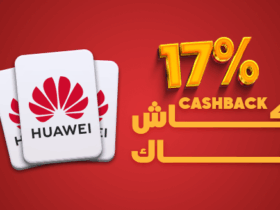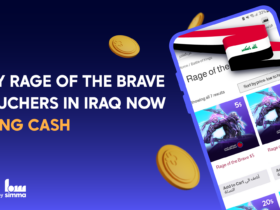It was never a question of if but rather when fintech was going to intersect with the gaming industry. When fintech hit the ground running, it quickly introduced a new normal—accessibility for all—and gaming was its new frontier. The industry’s perpetually growing access to digital tools, channels, and innovations made for a seamless integration into an easy, pay-to-play fintech ecosystem that would never have existed in an analog world. Gone were the days when online transactions solely relied on traditional payment systems like credit and debit cards. Now, users could buy games or purchase virtual goods using gateways that are built for everyone, regardless of their access to a bank account. From charging digital wallets through local vendors to adding gaming tabs to phone plans, fintech revolutionized the gaming industry and ushered it into a new era.
Fintech brings us one step closer to global gaming.
To understand fintech’s seamless integration into the gaming industry, we need to take a quick look at the roots of video games themselves. What started with Tennis for Two on a Donner Model 30 evolved into a dynamic world of 3D graphics, animation, expansive stories, and design. Innovation and possibility were at the heart of video games, an ethos the gaming industry has continued to embrace on global scales. Today, gaming is the world’s most lucrative entertainment industry and shows no signs of slowing down.
These disruptive innovations, propelled by the growing reach of mobile phones and the COVID-19 lockdowns that had people glued to their phones and gaming consoles, laid the groundwork for fintech’s seamless integration into the gaming industry. Consider massively multiplayer online games (MMOs) where users need to advance quickly through changing conditions: online payment solutions allowed gamers instant access to items and virtual goods that help them develop their characters, tools, and gameplay. The addition of alternative payment solutions resulted in a complete shift in their experiences, actively bridging the gap between users and games.
Fintech: facilitating inclusivity in gaming.
Many emerging markets are severely underbanked, and limiting games to individuals with access to traditional banking services is ultimately exclusionary. Not only has it stopped many around the world from experiencing the full extent of what the industry has to offer, it also stops developers from accessing communities and markets around the world due to their limited integration opportunities.
These challenges apply to the overall gaming industry but are especially apparent in mobile gaming. Despite it quickly becoming a global favorite, with 50% of the world’s gaming revenues in 2020 coming in from smartphone games and expected profits of over $100 billion by 2023, web stores still limit payment solutions to PayPal and a few bank cards, effectively alienating an enthusiastic segment from pursuing their favorite games. Fintech then becomes the obvious answer, granting users access to payment solutions—ones that speak their languages, understand their needs, and position them equally in today’s digital landscape.
Fintech in MENA, the underbanked gaming kingdom.
MENA is the perfect grounds for fintech to push the limits of gaming, accelerating its reach, inclusion, and variety. The MENA region’s love for the industry is unparalleled, with MENA now boasting more gamers than the U.S., and almost as many gamers as Europe. Online multiplayer games have built substantial communities in the region and have fostered a sense of companionship among the younger demographic. Large game developers like Ubisoft, Minecraft, and Fortnite see the merit in MENA gamers, with some of their most passionate fans coming from the region. This passion is inevitably translated into numbers; in 2021, MENA spent over $3 billion on digital gaming, game downloads surpassed the global growth rate by nine times to reach 4.9 billion downloads, and consumer spending increased by three times the global growth rate and passed $1.6 billion.
And yet, the full potential of the MENA gaming market remains largely untapped, with 70% of the region being underbanked. Increased investments in fintech startups and the region’s crypto boom as a decentralized payment solution are creating multiple alternative payment channels that allow users access to services without the need for a bank account. These regional fintech solutions inevitably reshape how users pay for many of their games.
So who games where around the region?
Saudi Arabia’s recent developments have taken a slew of industries by storm, and gaming is no exception. The Kingdom is seeing a meteoric spike in its gaming population, and now has the highest number of gamers per capita, both regionally and globally. As of 2021, a staggering 89% of the Saudi population are gamers, and the Kingdom is ranked the 19th biggest gaming market in the world. The popularity of gametech in Saudi Arabia is fueled by its young and tech-savvy population, as well as the national diversification strategy that the Saudi Vision 2030 is encouraging. The United Arab Emirates also ranks highly in the regional gaming industry, with gamers spending more per capita than anyone in the region, and very highly in comparison with the rest of the world. Egypt is home to the highest number of gamers in the region—a whopping 38 million gamers—despite only 57% of the country’s over 109 million people having access to the Internet. But, it’s yet to meet its true potential. Esports are especially gaining popularity, and regional events like the Intel Arabian Cup Grand Finals was held in Cairo in 2022.
Accessibility is important, but so is localization.
MENA makes up almost a quarter of the mobile gaming segment globally, and 70% of the Arab world sets Arabic as the default language on their smartphones. Despite this, only 1% of the gaming portfolios on local app stores were available in Arabic in 2022. This isn’t for a lack of successful localization examples—huge online mobile games like Clash of Clans and Fortnite found quick success in the region, especially in the Saudi Arabian market, demonstrating the substantial potential of the market and the revenue opportunities that localized games can offer. Regional platforms like Tamatem Games help boost these numbers by reliably localizing games and increasing access to Arabic-speaking games in the region. These increased accessibility efforts coupled with utilizing localized fintech solutions are vital to penetrating the lucrative market of Arabic-speaking gamers.
MENA fintech solutions and payment tools
Local and regional services that understand the MENA demographic are able to tailor their offerings to meet the diversified needs of people across the region. A multitude of services are now available to help users engage in Arabic-speaking, one-click experiences to pay for their purchases. Award-winning PayTabs, for instance, provides merchants across the MENA region with plug-and-play payment features for their businesses, and Saudi Arabia’s Moyasar, a regional fintech favorite, allows users to choose from a plethora of payment gateways. Egypt’s Fawry also allows users to make payments directly online or through a network of over 200 branches across the country. These are just three examples of the expansive fintech networks that locals have become all too familiar with. They are the key that allows the MENA mobile gaming market to be accessible for investors and developers looking to collaborate and grow in the region. At Tamatem Plus, we’re already streamlining the process for mobile game developers and gamers alike, providing a one-click experience with over 15 active payment methods and solution providers in the region.
With microtransactions being the new status quo in mobile gaming, developers can only stand to benefit from this. What was once a seemingly impenetrable market is now one click away. Growing fintech solutions will allow game developers to release their games on platforms with untapped user bases, increasing the reach and revenues of their games. It will also incentivize them to invest in localizing gaming experiences that echo across the MENA market.
Gaming and Fintech: A Symbiotic Relationship
Efficiency in payments will continue to be a priority for gamers everywhere, and the limiting access of some payment solutions test consumer loyalties every day. Innovations that accommodate the habits of users and protect their payments while prioritizing their privacy is the perfect way for fintech to develop solutions that would help the gaming industry maintain its winning streak. Additionally, the growth strategies of the gaming industry are setting up good spaces for fintech to begin observing the potential impact of its solutions, its own growth patterns, and subsequent areas of development. As for the MENA region, exponential growth is expected for both its gaming and fintech industries, and it would be amiss for AAA game developers to not see them to their full potential. With trends and access points on the rise, the future of fintech in gaming looks bright, and everyone is bound to come out a winner.






